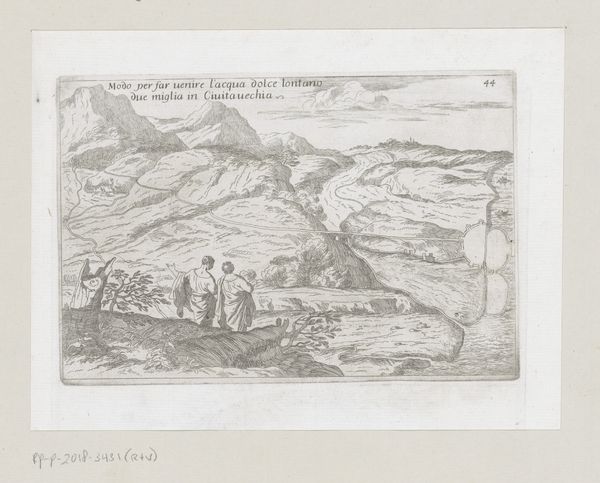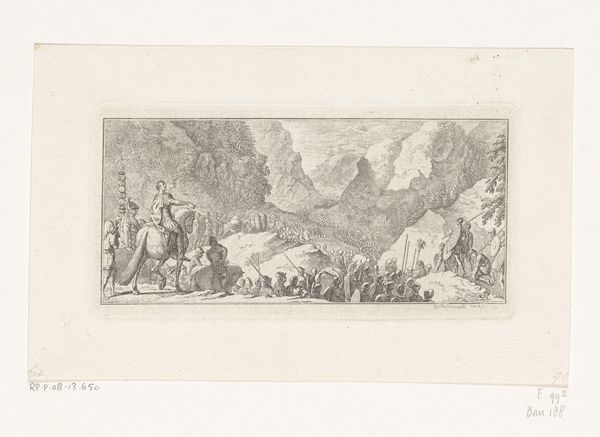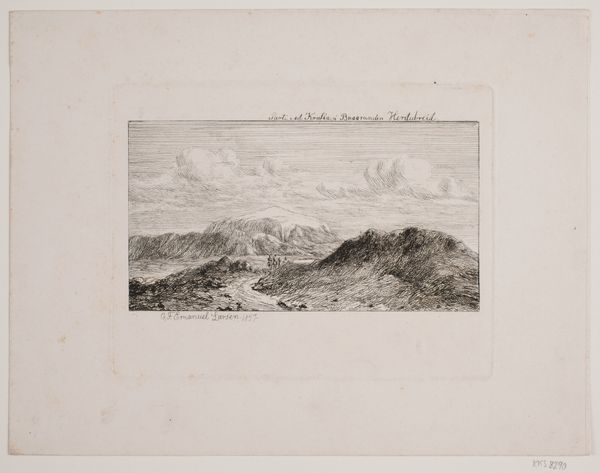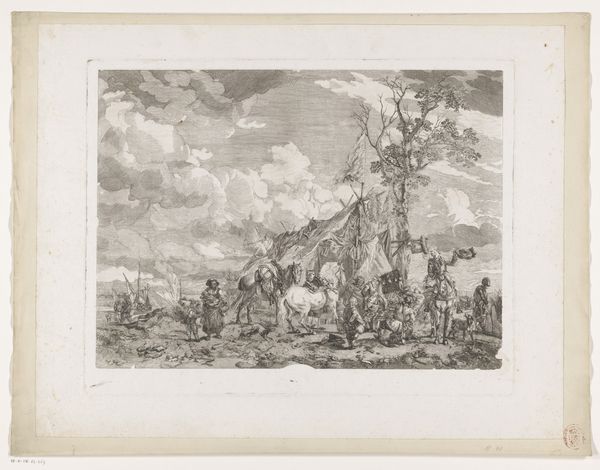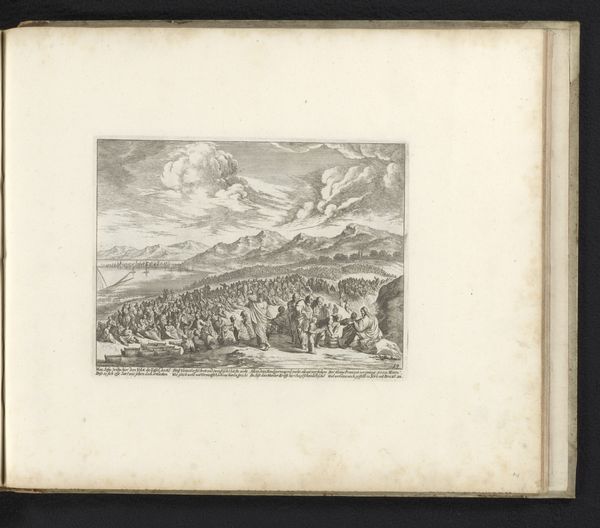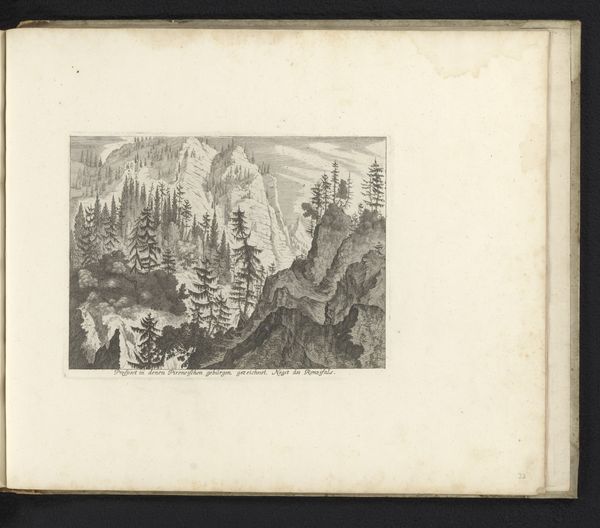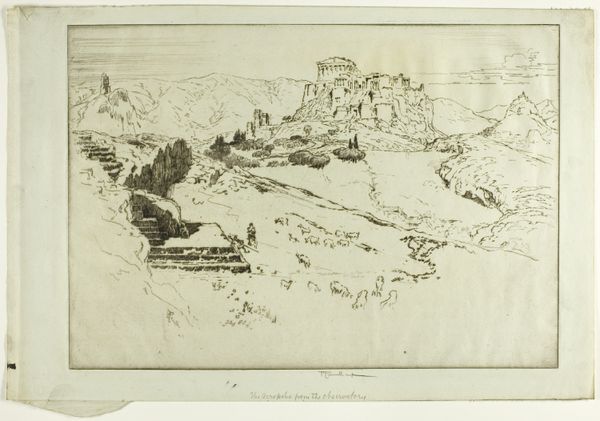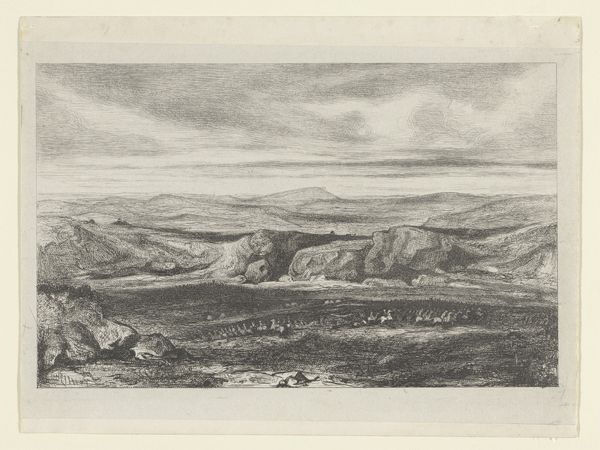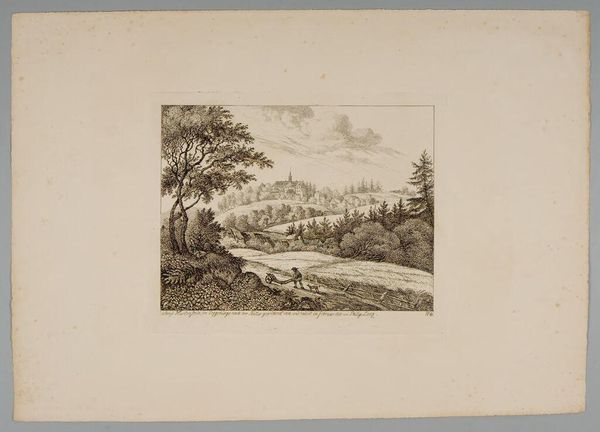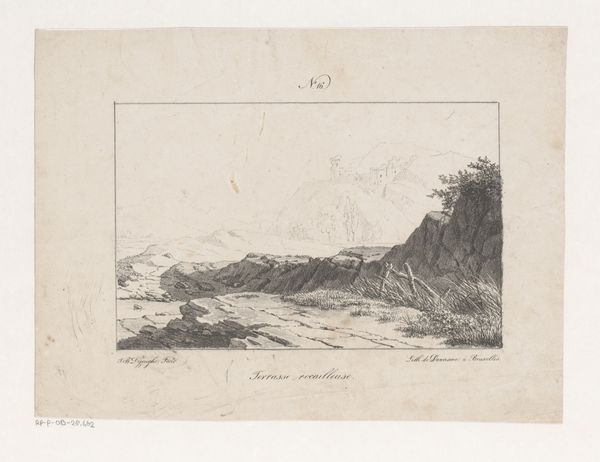
#
aged paper
#
toned paper
#
ink paper printed
#
personal sketchbook
#
coloured pencil
#
pen-ink sketch
#
ink colored
#
watercolour illustration
#
sketchbook art
#
watercolor
Dimensions: height 158 mm, width 267 mm
Copyright: Rijks Museum: Open Domain
Curator: Editor: So, here we have "Campi Flegrei," an ink and watercolor work on toned paper from 1680 by an anonymous artist. There's this palpable sense of human curiosity versus the immense, threatening power of nature, almost a record of a sublime encounter. What strikes you when you look at this piece? Curator: It's a fascinating depiction of the Campi Flegrei. More than just a picturesque scene, think about what it means to witness and record such a volatile landscape in the 17th century. How did societal beliefs about nature, perhaps divine power or even emerging scientific observation, shape its representation? Editor: That's an interesting way to approach it. I was focused more on the art, rather than… the moment it captures. So it is like the printing press brought the far reaches of the world into focus, and things like volcanic landscapes can now enter European thought, as a sign of god, power, knowledge? Curator: Precisely! It's not merely a recording of an event but an interpretation influenced by its historical moment. It reflects early dialogues on humanity’s place within—or perhaps against—the natural order, don’t you think? Note how small people appear against the eruption. Editor: Definitely. The composition emphasizes our smallness and potential insignificance against this kind of geological event. So do you think an environmental perspective can speak to social inequalities during this time as well? I guess rich nobles might view that event much differently than poor townspeople. Curator: Absolutely! Access to resources, social standing, even the lens through which natural disasters are understood - it’s all interconnected. Analyzing it this way invites reflection on the social fault lines even as the earth itself rumbles, doesn't it? Editor: Yeah, viewing this old landscape as social commentary gives it much more depth than a pretty picture from 1680. Thanks.
Comments
No comments
Be the first to comment and join the conversation on the ultimate creative platform.
